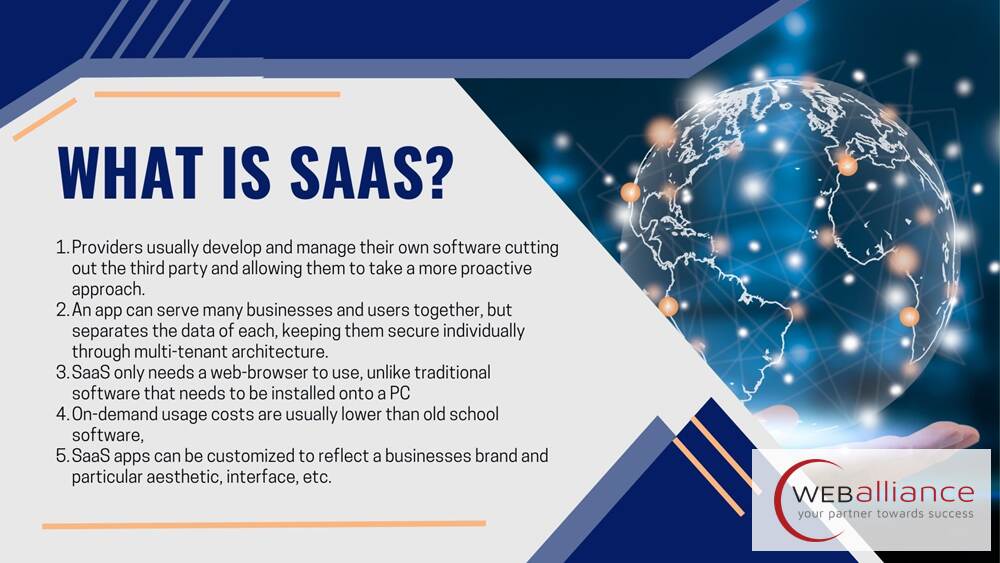What is SaaS?

What is, and why would I want, SaaS?
SaaS, or Software as a service, is essentially where software is licensed and provided through a subscription or pay-per-use basis. The software is centrally hosted by the provider and accessed through a customer’s web browser. This is achievable through cloud computing pushing us all in the direction of mobile based working environments away from the traditional office desk.
And how does it work?
Businesses generally use SaaS for business apps and office software. This often includes messaging services, payroll, and accounts, as well as software that manages custom databases, information systems, HR, and resources. SaaS apps are key to running some of the human aspects of a business so start the SaaS countdown at the right time for our business to take the ultimate benefit of SaaS and fully understand the features of database for your business and how it can help to grow.
5 Advantages of SaaS
- Providers usually develop and manage their own software cutting out the third party and allowing them to take a more proactive approach.
- An app can serve many businesses and users together, but separates the data of each, keeping them secure individually through multi-tenant architecture.
- SaaS only needs a web-browser to use, unlike traditional software that needs to be installed onto a PC
- On-demand usage costs are usually lower than old school software,
- SaaS apps can be customized to reflect a businesses brand and particular aesthetic, interface, etc.
Why might businesses need it?
Nowadays, companies are all looking to be more flexible in the ways they work. The best way to do this is through off-premises custom software. As cloud computing and smart devices become part of our every day lives and find themselves embedded in our working day, so will SaaS.
SaaS now vs 10 years ago
The first decade of SaaS has gone very well to say the least. ‘After more than a decade of use, adoption of SaaS continues to grow and evolve within the enterprise application markets,’ says Tom Eid, Research Vice President at Gartner. As technological developments close the gaps in security, availability and timescales, more and more organisations have signed up for SaaS. In turn these companies have been able to offer more services to vendors and customers.
What’s in store for the future?
So, what does the future hold for SaaS? Where else can it go?
SaaS is perfectly tailored to small- and medium-sized businesses, so it’s easy to imagine its adoption may become widespread in the long-term. So long as application service providers remain a viable source of services, it’s fair to say we’ll continue to see SaaS take over from the big names in software. Make sure to start the SaaS countdown at the right time for your business.


